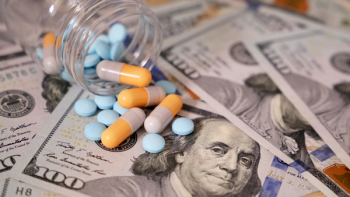
Biden Highlights Drug Pricing Reforms to Advance Legislative Agenda
The White House is looking to pay for some of its prime social and health initiatives by reducing outlays for prescription drugs, according to an announcement by President Biden.
The White House is looking to pay for some of its prime social and health initiatives by reducing outlays for prescription drugs, according to an announcement by President Joe Biden that supports several leading drug-price control policies strongly backed by Democrats.1 There’s not much new on the reform list, but the emphasis is designed to gain support for broader spending measures from both party centrists and reformers, as well as some Republicans.
The lead proposal reiterates earlier calls for granting Medicare authority to negotiate drug prices. Here the change would apply only to “a subset of expensive drugs that don’t face any competition on the market,” a more limited list of therapies that lack generic alternatives. And the plan does not aim to aim to compel price negotiations by linking reform to an international reference price or by challenging manufacturer intellectual property.
The administration also calls for penalties on pharma companies that raise prices faster than inflation. And it seeks to establish “a firm cap” on the amount that Medicare beneficiaries have to pay out-of-pocket for drugs each year, with some of the reforms offsetting that added cost.
Drug importing and support for generics and biosimilars are on the table, as the plan repeats earlier proposals for federal agencies to work with states and Tribes to “import safe, lower-cost prescription drugs from Canada.” Similar initiatives by the Trump administration and others have backed drug importing plans, but implementation has proven difficult and unrewarding.
Access vs. costs
While the White House announcement signals the administration’s continued intent to make prescription drugs more affordable and less burdensome for consumers, this latest plan basically adds new emphasis to policy changes in this area. In response to Biden’s announcement, PhRMA president Stephen Ubl blamed high drug costs on insurance industry policies and warned that the president’s policies would “undermine access to life-saving medicines.”2 PhRMA looks to shift the policy debate to measures designed to reduce health care costs overall, as opposed to specific drug pricing proposals, and to build on broader public applause for industry’s success in fast development of anti-COVID vaccines and therapies.
A recent posting by the Biotechnology Innovative Organization (BIO) highlights a range of state initiatives that set payment limits on drug outlays. These include new laws requiring drug price transparency and notices of price increases; programs to link local drug prices to those in Canada; and rule updates to permit pharmacies to dispense interchangeable biosimilars.3
At the same time, consumer advocacy groups penned a letter to Health & Human Services (HHS) secretary Xavier Becerra seeking to combat high drug prices by limiting patent monopolies of brands seen to stifle generic competition.4 The group led by Public Citizen emphasizes that HHS already has authority to establish generic competitors to patented drugs, including the exercise of “march-in” rights on drug patents developed with federal funding.
The administration is looking for its drug pricing reform to help build support for a $3.5 trillion social policy bill backed by Democrats and headed for consideration as part of a massive budget reconciliation package moving through Congress. Here, a significant drug pricing package will be proposed to offset some of its considerable costs, particularly those to expand Medicare to younger age groups and to add vision and hearing benefits and long-term care.
Meanwhile, the $1 trillion infrastructure package just approved by the Senate with bipartisan support includes only one drug pricing provision — a proposed delay in implementing the “rebate rule” authorized by the Trump administration — a policy that limits manufacturer rebates on drugs covered by Medicare Part D unless the rebates are passed through to the dispensing pharmacy to benefit consumers. The new rule was calculated to cost the government nearly $200 million over ten years, so the added delay provides a “savings,” much applauded by PBMs and health insurers that currently benefit from manufacturer rebates.
Notes
Newsletter
Lead with insight with the Pharmaceutical Executive newsletter, featuring strategic analysis, leadership trends, and market intelligence for biopharma decision-makers.





